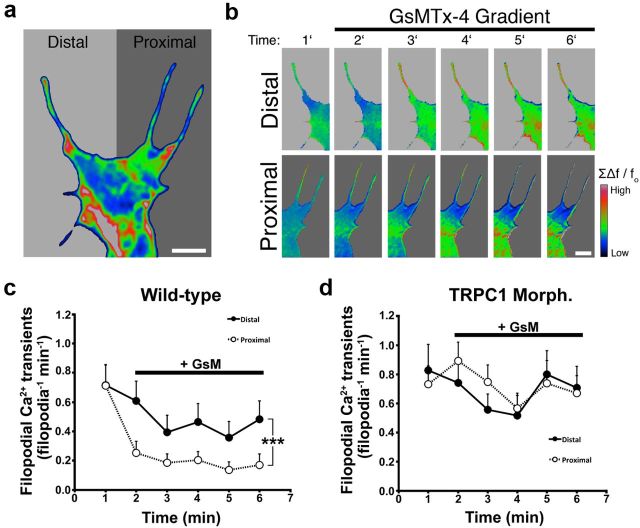Figure 8.
Local modulation of MS channels drives asymmetric filopodial Ca2+ transients. a, A representative Fluo-4-loaded growth cone showing the division of proximal versus distal filopodial relative to a perpendicular gradient of GsMTx4 applied from the right. This image was generated by summing all frames of a 6 min time series captured at 1 s intervals. b, Summed frames binned over 1 min time intervals show the changes in Fluo-4 intensity (∑Δf/f0) during exposure to the GsMTx4 gradient (see Materials and Methods). Hot colors indicate that the frequency of filopodial Ca2+ transients was greater on the distal (upper) versus proximal (lower) side of this growth cone during the initial exposure to graded GsMTx4. c, The average (±SEM) frequency of Ca2+ transients in proximal versus distal filopodia of growth cones in gradients of GsMTx4 in wild-type (c) or TRPC1 knockdown neurons (d). In wild-type, but not in TRPC1 knockdown neurons, distal filopodia exhibit a significantly higher frequency of Ca2+ transients compared with proximal within 1 min of gradient production (***p < 0.001, two-way ANOVA). Scale bars: 4 μm.

